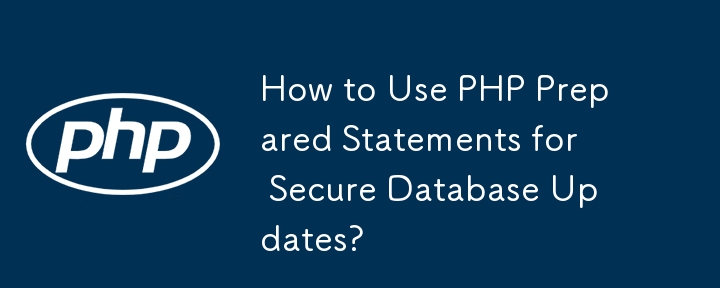Found a total of 10000 related content
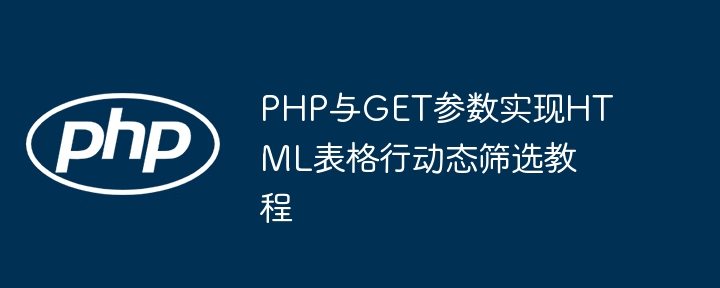
Tutorial on implementing HTML table dynamic filtering with PHP and GET parameters
Article Introduction:This tutorial introduces in detail how to use PHP and URL GET parameters to realize dynamic filtering and display of database data in HTML tables. By clicking the preset button, users can filter and hide or display corresponding table rows according to specific status (such as online or offline), providing a simple and effective server-side data filtering solution, and emphasizing potential security risks and preventive measures.
2025-09-01
comment 0
536
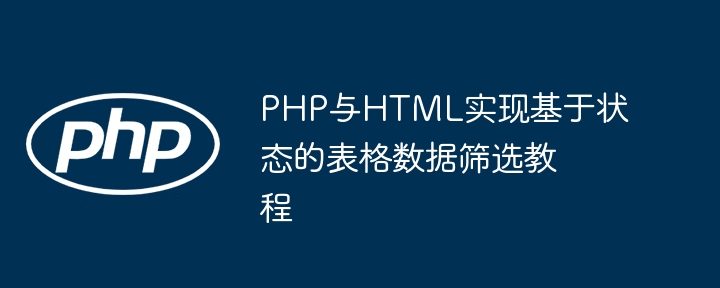
Tutorial on state-based tabular data filtering with PHP and HTML
Article Introduction:This tutorial details how to use PHP and HTML to achieve the function of dynamically filtering HTML table data. By setting buttons with GET parameters, users can filter table rows according to the proxy status (such as online, offline, disconnected), thereby efficiently retrieving and displaying data in specific states on the server side, improving the interactivity of data display. The article also emphasizes the security issues and preventive measures of SQL queries.
2025-08-31
comment 0
776
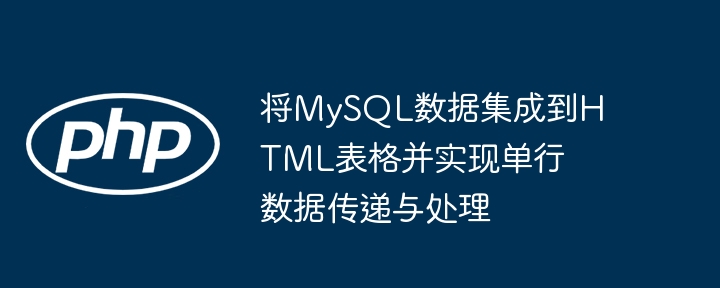
Integrate MySQL data into HTML tables and implement single-line data transfer and processing
Article Introduction:This article explains in detail how to display the data queried from the MySQL database in an HTML table, and when a specific button in the table is clicked, the data of the corresponding row (usually a unique identifier ID) is safely and efficiently passed to another PHP page for subsequent processing (such as editing). The tutorial covers key steps and security practices for front-end HTML link building, URL parameter passing, and back-end PHP using PDO for parameter verification and database query.
2025-08-17
comment 0
153

How to use collections in Laravel?
Article Introduction:Laravel collection is an advanced encapsulation of PHP arrays, providing chained calling methods to process data. It is implemented through the Illuminate\Support\Collection class, simplifying filtering, mapping, sorting and other operations. For example, filtering users older than 25 and sorting by name requires only one line of code. Common uses include: 1. Create a collection through collect() function or model query; 2. Use map(), filter(), pluck() and other methods to process data; 3. Support chain calls to improve code readability; 4. Pay attention to collection immutability, return value type and how to use it in Blade templates. Mastering these techniques can significantly improve development efficiency.
2025-07-24
comment 0
742
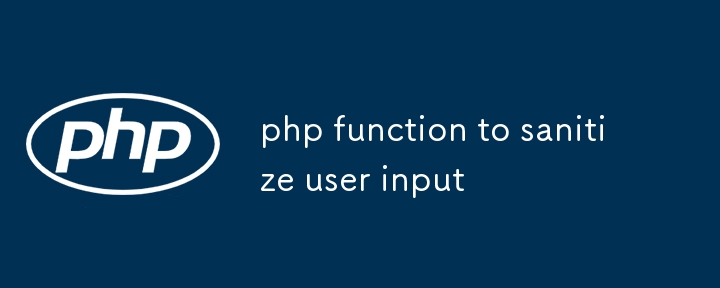
php function to sanitize user input
Article Introduction:To ensure the security of user input in PHP, a cleaning function needs to be written to process input. The specific methods are as follows: 1. Use filter_var to perform basic cleaning, such as filtering HTML tags; 2. Select the corresponding filtering method according to the input type (such as mailbox, URL, integer, text); 3. Use batch processing functions for multi-field input to improve efficiency; 4. Pay attention to the fact that the back-end verification cannot rely on the front-end, avoid blacklisting strategies, and combine parameterized query to prevent SQL injection, and clean data according to the context when output.
2025-07-22
comment 0
311

What are some common security risks associated with PHP sessions?
Article Introduction:The security risks of PHP sessions mainly include session hijacking, session fixation, session prediction and session poisoning. 1. Session hijacking can be prevented by using HTTPS and protecting cookies. 2. Session fixation can be avoided by regenerating the session ID before the user logs in. 3. Session prediction needs to ensure the randomness and unpredictability of session IDs. 4. Session poisoning can be prevented by verifying and filtering session data.
2025-04-28
comment 0
924
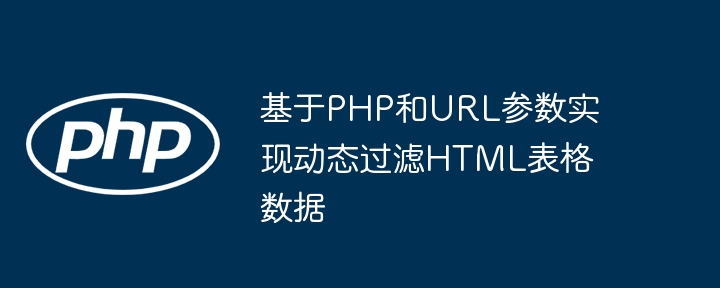
Dynamic filtering of HTML table data based on PHP and URL parameters
Article Introduction:This article introduces in detail how to use PHP and URL GET parameters to achieve dynamic filtering of HTML table data obtained from the database. By creating a button with specific status parameters, the user can click the button, and the server-side PHP script modifies the SQL query based on the received parameters, so that only table rows that meet the conditions are displayed. The tutorial highlights the use of preprocessing statements to prevent SQL injection attacks and provides complete code examples and security practice suggestions.
2025-09-03
comment 0
370
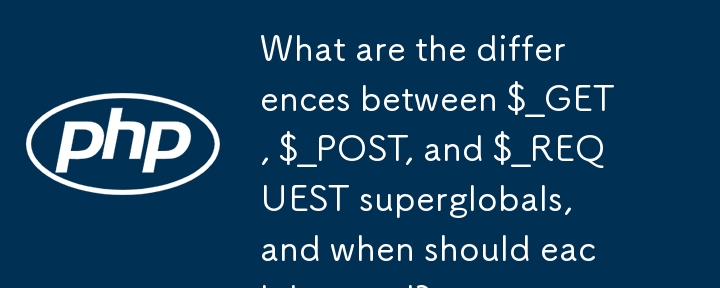
What are the differences between $_GET, $_POST, and $_REQUEST superglobals, and when should each be used?
Article Introduction:In PHP, $_GET, $_POST, and $_REQUEST are used to collect data from HTTP requests, but for different purposes. 1.$_GET is used to retrieve non-sensitive data through URL query strings, suitable for scenarios such as filtering content, paging links, etc.; 2.$_POST is used to process sensitive or large amounts of data submitted through HTML forms, such as login information and file uploads; 3.$_REQUEST is a collection of $_GET, $_POST and $_COOKIE, providing a unified access method, but may cause conflicts. It is recommended to use $_GET or $_POST first to avoid ambiguity and security risks.
2025-06-11
comment 0
677
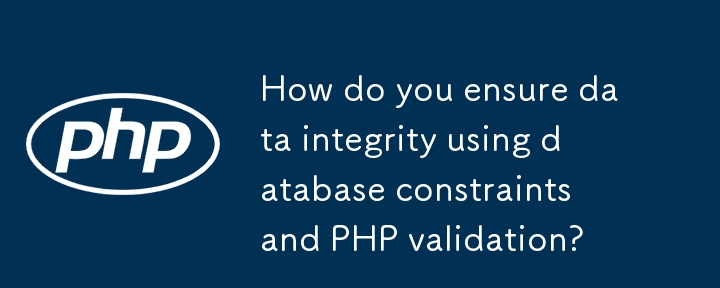
How do you ensure data integrity using database constraints and PHP validation?
Article Introduction:Use database constraints as the final security network to ensure the accuracy and consistency of data storage through primary keys, uniqueness constraints, foreign keys, non-empty constraints and inspection constraints; 2. Verify input as early as possible at the PHP layer, and use functions such as filter_var or verification libraries to filter, type check and rule verification of data to improve user experience and reduce invalid database requests; 3. Combining the two, it forms a defense in depth, PHP provides friendly feedback and pre-filtering, and the database forces to ensure data integrity. At the same time, database exceptions are captured and properly handled in PHP to ensure that even if there are problems such as race conditions, the system can still respond correctly, thereby fully ensuring data integrity.
2025-08-14
comment 0
870
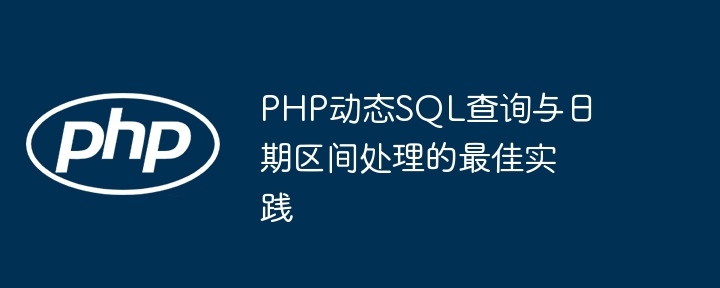
Best practices for PHP dynamic SQL query and date interval processing
Article Introduction:This article aims to explore strategies for efficiently and securely handling dynamic SQL queries and date interval iterations in PHP. In response to the problems of functions as parameters and global variables in traditional methods, we propose a modern solution based on structured data, PDO preprocessing statements and function parameter passing to improve the maintainability, security and readability of the code.
2025-08-26
comment 0
277

How do you implement custom session handling in PHP?
Article Introduction:Implementing custom session processing in PHP can be done by implementing the SessionHandlerInterface interface. The specific steps include: 1) Creating a class that implements SessionHandlerInterface, such as CustomSessionHandler; 2) Rewriting methods in the interface (such as open, close, read, write, destroy, gc) to define the life cycle and storage method of session data; 3) Register a custom session processor in a PHP script and start the session. This allows data to be stored in media such as MySQL and Redis to improve performance, security and scalability.
2025-04-24
comment 0
736
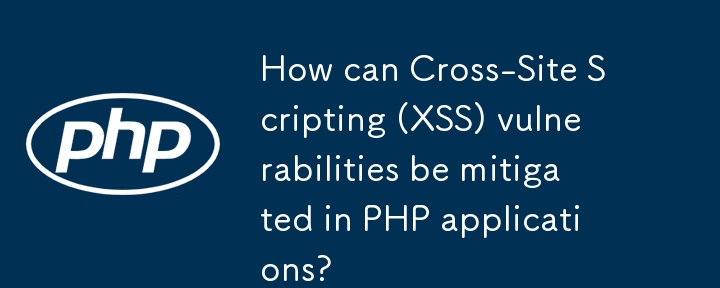
How can Cross-Site Scripting (XSS) vulnerabilities be mitigated in PHP applications?
Article Introduction:To mitigate XSS vulnerabilities in PHP applications, we need to start from four aspects: input filtering, output escape, CSP policy and framework security functions. 1. Verify and filter all user input, use filter_var() function to verify the data format, and purify the HTML content through HTMLPurifier; 2. Escape according to the context when output, such as using htmlspecialchars() to process HTML content, and embed JavaScript with json_encode(); 3. Enable content security policy (CSP), set HTTP headers to limit the source of scripts, and you can first use the Report-Only mode to collect information during the development stage; 4. Use the built-in mechanism of the framework, such as Lar
2025-06-19
comment 0
1052

python init example
Article Introduction:init is a method used in Python to initialize object properties. 1. When creating an instance of the class, __init__ is automatically executed, which is used to set the initial state of the object, such as binding the parameter to the instance through self.name=name. 2. You can set default values for parameters, such as breed="Unknown" and age=1 in the Dog class, making initialization more flexible. 3. Logical verification can be added to init, such as the BankAccount class checks whether balance is negative, improving data security. 4. Note that init is an initialization method rather than a constructor. The object already exists before the method is executed and must be spelled correctly and cannot be written as int or ini.
2025-07-24
comment 0
473

What is serialization in PHP and what are potential security risks?
Article Introduction:Serialization in PHP is a process of converting objects or data structures into strings, which are mainly implemented through serialize() and unserialize() functions. Serialization is used to save object state for delivery between different requests or systems. Potential security risks include object injection attacks and information leakage. Avoiding methods include: 1. Limit deserialized classes and use the second parameter of the unserialize() function; 2. Verify the data source to ensure it comes from a trusted source; 3. Consider using more secure data formats such as JSON.
2025-04-02
comment 0
1229
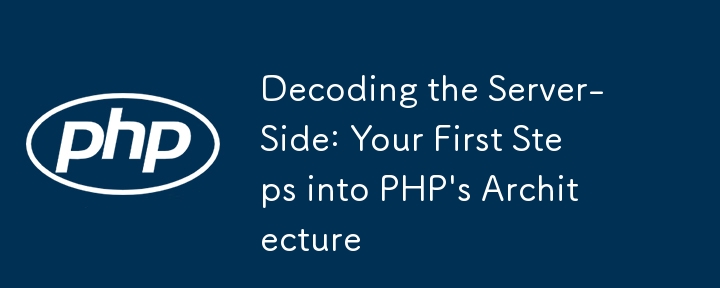
Decoding the Server-Side: Your First Steps into PHP's Architecture
Article Introduction:PHP runs on the server side. When the user requests the page, the server executes the code through the PHP engine and returns HTML to ensure that the PHP code is not seen by the front end. 1. Request processing: Use $_GET, $_POST, $_SESSION, $_SERVER to obtain data, and always verify and filter inputs to ensure security. 2. Separation of logic and display: Separate data processing from HTML output, use PHP files to process logic, and template files are responsible for displaying, improving maintainability. 3. Automatic loading and file structure: Configure PSR-4 automatic loading through Composer, such as "App\":"src/", to automatically introduce class files. Suggested projects
2025-07-27
comment 0
986

Monitoring Queued Jobs Telescope | Queue Inspection
Article Introduction:To monitor queued tasks in Laravel's Telescope, you need to manually add the listening event. 1. Open the app/Providers/TelescopeServiceProvider.php file; 2. Introduce and listen to the JobQueued event in the register() method; 3. After the configuration is completed, you can view the detailed information of the queuedjob under the Jobs tag of Telescope, including the task class name, queue name and enqueue parameters. This method is suitable for Redis or database-driven queues and supports monitoring of delayed tasks. Note that filtering rules and data security policies should be set reasonably in the online environment to avoid performance problems and sensitive information
2025-06-27
comment 0
600
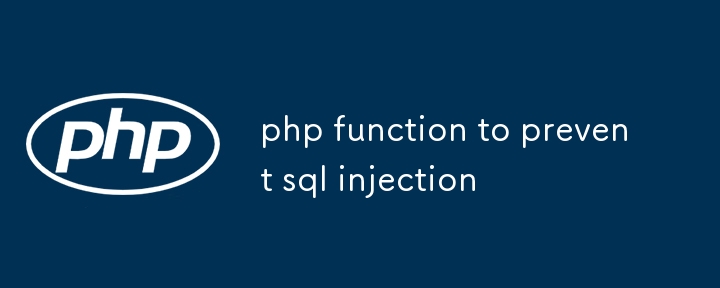
php function to prevent sql injection
Article Introduction:The core method to prevent SQL injection is to use preprocessing statements and parameterized queries. 1. Use PDO preprocessing statements to bind user input through question marks or named parameters to ensure that the input is not executed as SQL code; 2. Use mysqli's preprocessing and bind_param method to clearly specify the parameter type to prevent malicious input from tampering with the SQL structure; 3. Avoid manually escape input, such as mysqli_real_escape_string, because it is prone to errors and insufficient security; 4. Use PHP built-in filter functions to verify input, such as filter_input and intval, to ensure the legality of the input data. These methods can effectively improve the security of PHP applications and prevent SQL
2025-07-22
comment 0
681
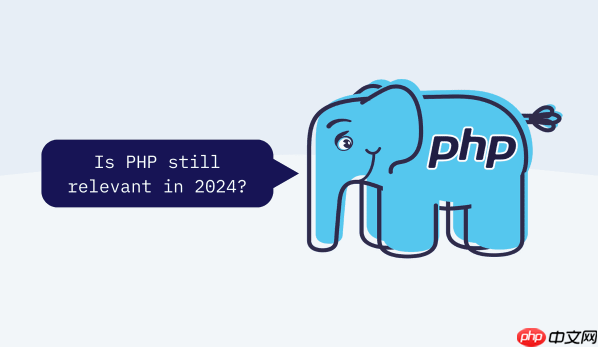
PHP realizes multi-user blog system monetization PHP blog content management and profit solution
Article Introduction:To build a monetizable PHP multi-user blog system, you need to build a solid technical foundation and then design a business model; 2. Data security must be pre-processed to prevent SQL injection, password salt hashing, XSS/CSRF defense, and regular patch updates; 3. Performance optimization relies on database indexing, caching mechanism (Redis), CDN to accelerate static resources, and asynchronous queue processing tasks; 4. Content review can adopt a hybrid mode of pre- (new user) and post- (old user) combined with AI recognition and keyword filtering; 5. In addition to advertising, profit methods can also provide paid subscriptions (customized domain names, data analysis), rewards, knowledge payment, affiliate marketing and event sponsorship.
2025-07-23
comment 0
369

